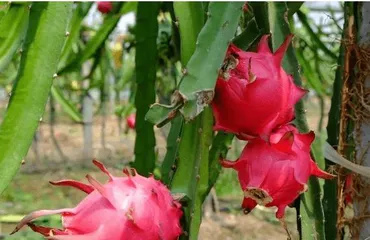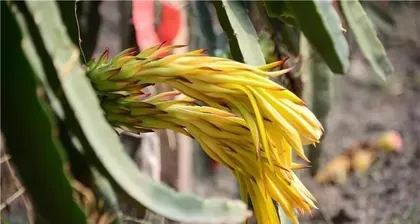Pitaya is a nutritious and unique tropical fruit, mainly grown in tropical regions of South America and Asia. However, in the winter of the Northern Hemisphere, pitaya requires special care and protection to survive the cold season. Let's see how we can protect them.

I. Reduce Watering Frequency
In winter, pitaya grows slowly and requires less watering to avoid soil becoming too wet, which can lead to root rot. At the same time, avoid drought and water the pitaya appropriately.
II. Control Environmental Temperature
To provide a good growing environment for pitaya in winter, we can control the temperature between 15-25°C, maintaining a constant temperature and humidity, and avoid large temperature differences or low humidity.

III. Maintain Ventilation
Winter is a season with severe air pollution. It is important to maintain ventilation to prevent pitaya from inhaling harmful gases. This also helps avoid excessively high or low temperatures, promoting healthy growth.
IV. Increase Light Exposure Time
Pitaya needs plenty of sunlight to grow, but the days are shorter in winter. We can use artificial light sources to extend the light exposure time, ensuring the plant gets enough sunlight.
V. Pruning
Winter is the dormant period for pitaya and the best time for pruning. You can appropriately prune the canopy and branches to maintain a good shape and improve the efficiency of photosynthesis.

VI. Prevent Pests
Winter is a season when many pests thrive, and pitaya can also be infested. We can prevent pests by spraying insecticides or using pest control products.
VII. Covering for Warmth
In the cold winter, we can use protective covers to shield the pitaya from severe cold. We can also increase the thickness of the soil layer to keep it moist and improve the plant's cold tolerance.
VIII. Fertilize Appropriately
Pitaya grows slowly in winter and needs appropriate fertilization, but avoid over-fertilizing to prevent issues like fertilizer buildup and root damage. Using organic fertilizers can increase soil nutrients and promote growth.
IX. Observe Carefully
In winter, pitaya requires special care and protection. We need to observe its growth closely, identify and solve problems promptly. If you see signs like withered leaves or leaf drop, take immediate action.
X. Prevent Diseases
Winter is a season for diseases to thrive, and pitaya is susceptible to infections. We can prevent and treat diseases by spraying fungicides or using disinfectants.
XI. Maintain Light Quality
With shorter days in winter, light quality is crucial. To ensure pitaya gets sufficient sunlight, we can use tools like shade nets to control light quality for optimal growth.
XII. Increase Air Humidity Appropriately
The air is dry in winter, and pitaya can be affected by the arid climate. We can increase air humidity to maintain a good growing state for the plant, using devices like humidifiers.
XIII. Keep Soil Loose
Soil can become hard in winter, affecting root development and nutrient absorption. To keep the soil loose, we can regularly till it to ensure good aeration and water retention.
XIV. Prevent Frost Damage
In extremely cold weather, pitaya is susceptible to frost damage. We can prevent this by using thicker covers or irrigating with warm water to ensure the plant's growth and development.
XV. Meticulous Care
Pitaya needs meticulous care to thrive. In winter, we need to pay special attention to its condition and provide timely care and protection to ensure it survives the season.
Winter is a critical period for pitaya growth. Only through scientific care and protection can pitaya successfully survive the cold winter. We need to control environmental temperature, maintain ventilation, increase light exposure time, prune reasonably, prevent pests, cover for warmth, fertilize appropriately, observe carefully, prevent diseases, maintain light quality, increase air humidity appropriately, keep soil loose, prevent frost damage, and provide meticulous care for pitaya to help them thrive.